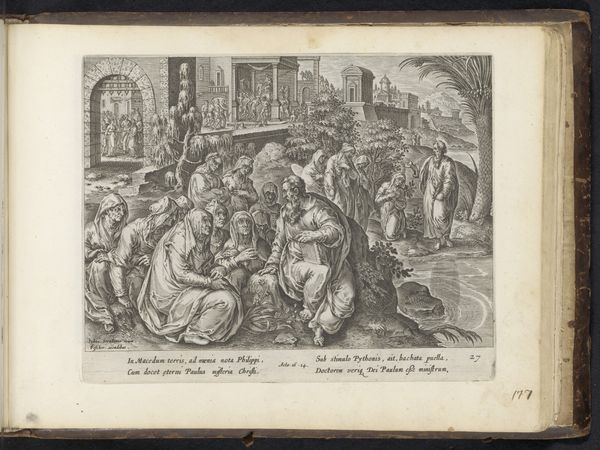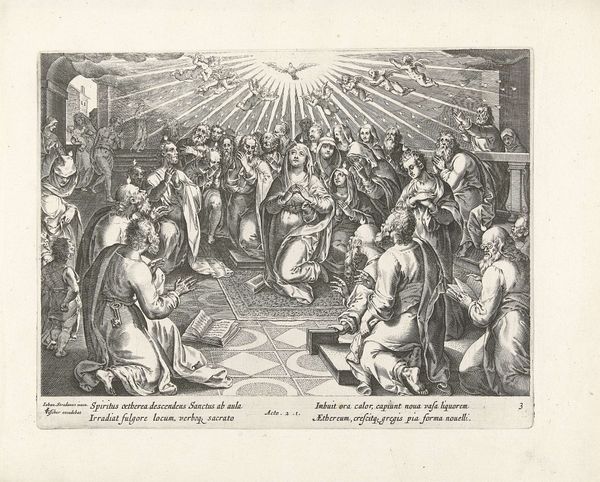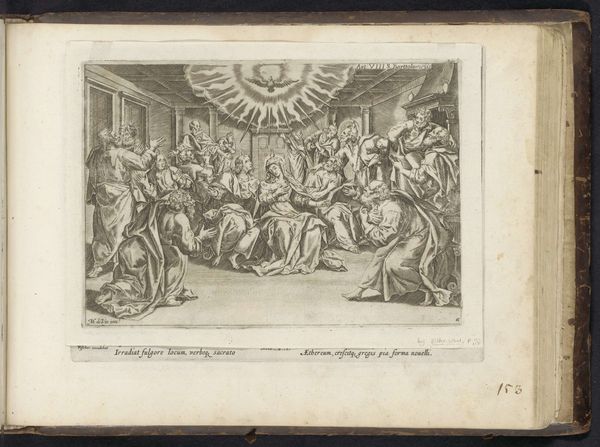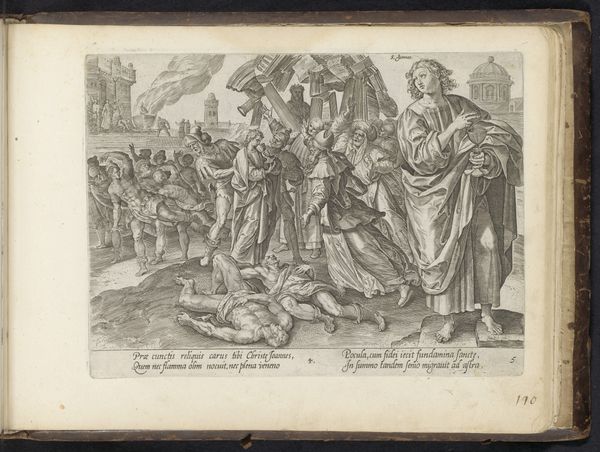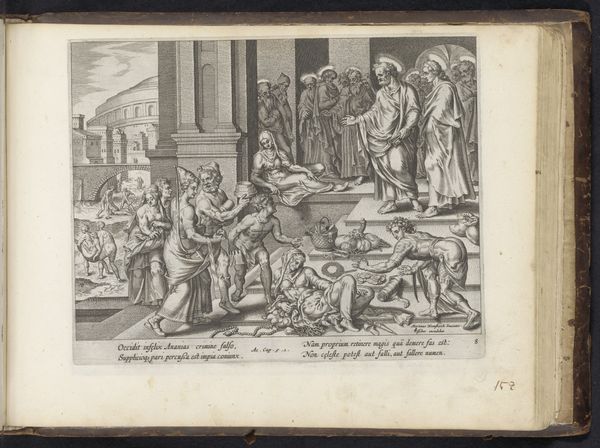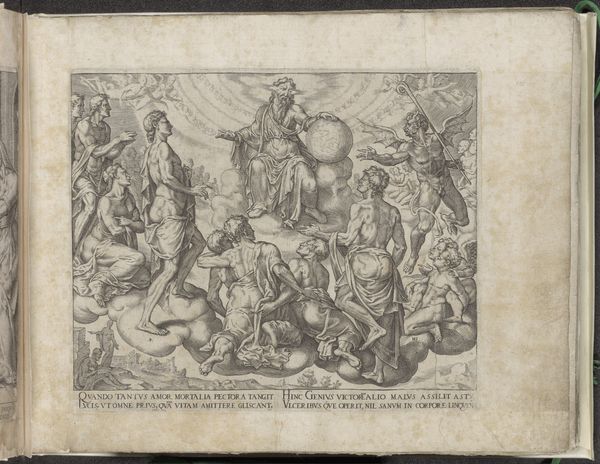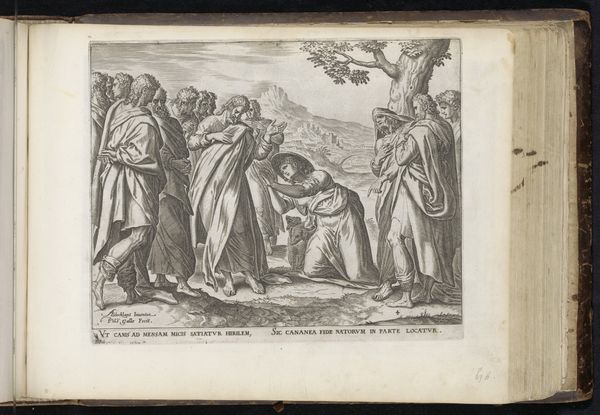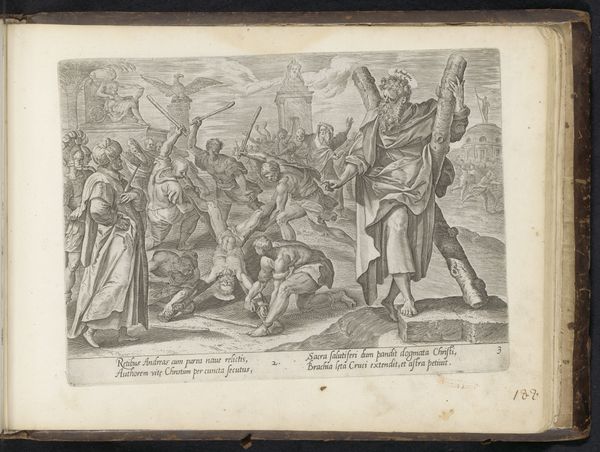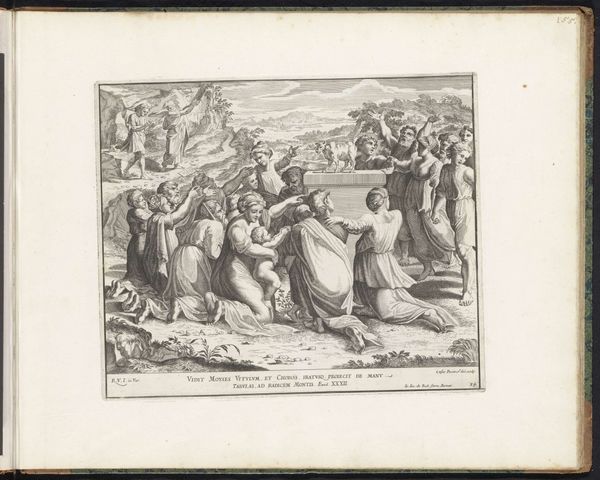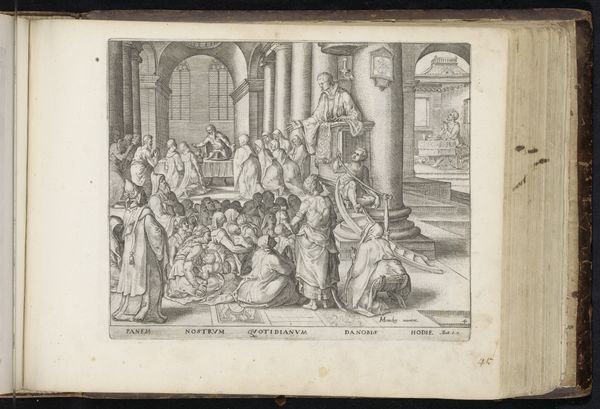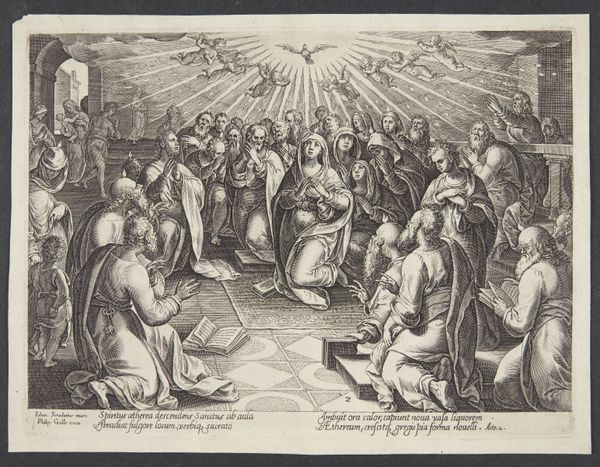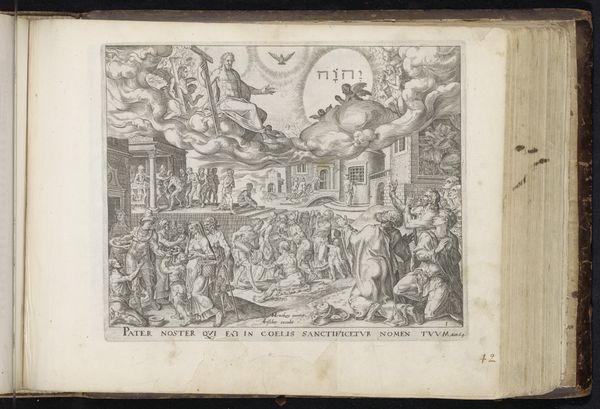
drawing, print, etching, ink
#
drawing
#
baroque
# print
#
etching
#
figuration
#
ink
#
coloured pencil
#
history-painting
Dimensions: height 204 mm, width 267 mm
Copyright: Rijks Museum: Open Domain
Curator: Looking at this print from the Rijksmuseum, "Uitstorting van de Heilige Geest," created sometime between 1643 and 1646 by an anonymous artist, I am struck by its density. An etching with ink, it seems crowded, doesn't it? Editor: It certainly does. I'm immediately drawn to the stark contrast between the tightly packed figures and the bursting light above. The image is visually dominated by the interplay of dark and light. How did the artist manage such intensity using only etching and ink? What kind of paper, what press was used? Curator: Those are vital questions. I'm intrigued by how the dove representing the Holy Spirit acts as a focal point. Around it we see smaller angelic figures swirling in the bright rays. Below, we find Mary surrounded by the Apostles—each rendered with distinct gestures, a clear visualization of spiritual transformation. They seem overcome. Editor: Absolutely. That dove and the radiating light emanating from it function as powerful symbols. The light—almost aggressively bright—is cascading over them, altering their perception, imbuing them with purpose. You have to wonder about the context in which such imagery became widespread and desirable, who was making it, and who was paying for it? Curator: Exactly! Considering the socio-political context in that era, it reflects both a collective yearning for divine guidance, as well as the power that such messaging could project on behalf of the Church and its patronage network. This outpouring visually translates themes of enlightenment, power, and the role of the Church on Earth. I am interested to know who they thought this kind of imagery was for, how it was to be displayed, and what other imagery was produced along with it to shape ideas of worship. Editor: For me, knowing this artwork is rendered with etching, ink, and possibly coloured pencil, is important. This adds another layer to our understanding. Prints were made in multiples to proliferate messages through easily made multiples that would often cross geographic boundaries. Understanding that fact affects how one can analyze this image from different places, contexts, and through lines. Curator: Very well said! Examining the imagery with all that you highlighted deepens its impact. By focusing on symbolic language, cultural history, production, and transmission, the image truly does communicate far more than it initially seems. Editor: Precisely. Bringing that into perspective truly unveils the essence held within it!
Comments
No comments
Be the first to comment and join the conversation on the ultimate creative platform.
